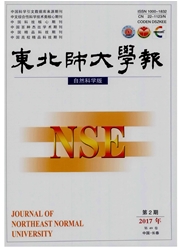

 中文摘要:
中文摘要:
安徽省是典型旱灾频发省份,而且每年发生旱灾的地区都有变化,了解旱灾风险空间动态变化的规律对防灾减灾部门及时准确制定抗旱规划意义重大.利用自然灾害风险形成四因子理论,选取安徽省气象、水文、社会和经济等18个指标,建立了安徽省旱灾风险评价模型,对安徽省2000—2009年旱灾风险进行了区划,利用单一风险动态度、综合风险动态度和风险置换系数等研究手段和方法对安徽省2000—2009年间旱灾风险动态变化进行了分析.结果表明:安徽省单一旱灾风险动态度变化的波动性较强,综合风险动态度变化则比较稳定;高旱灾风险和中旱灾风险、低旱灾风险和中旱灾风险之间置换相似性较强.
 英文摘要:
英文摘要:
Anhui Province is typical of the frequent drought provinces in China,and the region where drought disaster happened changed every year.It is benefit the disaster prevention and reduction department to drawing up drought control planning timely and accurately by understand the risk of drought disaster dynamic distribution rules.Firstly,through the nature disaster risk formation four factor theory,assessment model of drought disaster risk of Anhui Province was established,by using metrological,hydrological,society and economical etc.features as indicators.Secondly,analyze comprehensive dynamic degree of drought risk in Anhui Province from 2000 to 2010 by means of the dynamic degree of single risk,the dynamic degree of integrated risk,gravity center migration of risk and risk replacement coefficient.Mapping and analyze the risk zoning of drought disaster by GIS.The results showed that the single level dynamic degree of drought risk changed strongly,but the dynamic degree of integrated risk relatively stable in Anhui Province;It was strongly resembling that the transition between high risk-middle risk and low risk-middle risk.
 同期刊论文项目
同期刊论文项目
 同项目期刊论文
同项目期刊论文
 Dynamic risk assessment of drought disaster for maize based on integrating multi-sources data in the
Dynamic risk assessment of drought disaster for maize based on integrating multi-sources data in the Integrated Risk Zoning of Drought and Waterlogging Disasters Based on Fuzzy Comprehensive Evaluation
Integrated Risk Zoning of Drought and Waterlogging Disasters Based on Fuzzy Comprehensive Evaluation 期刊信息
期刊信息
